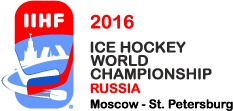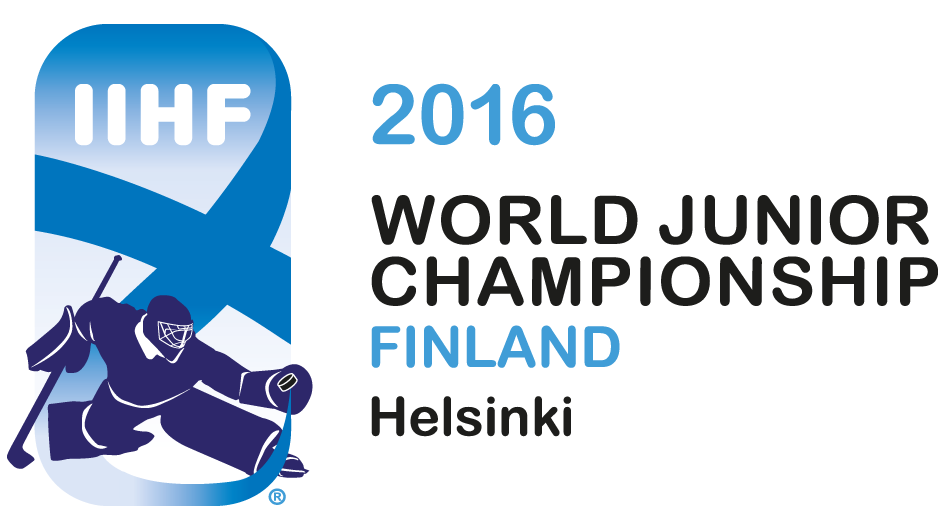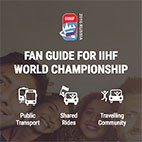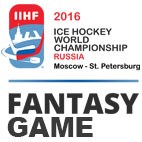Not where you’re from
Not where you’re from
Many country-player oddities at Worlds
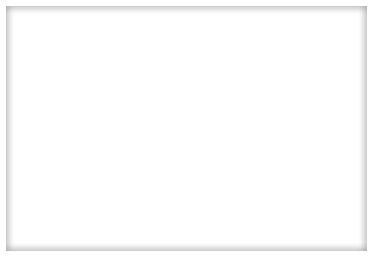
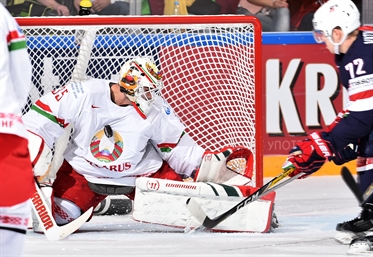 Kevin Lalande, Belarus' Canada-born goaltender, makes a save against USA's Frank Vatrano. Photo: Minas Panagiotakis / HHOF-IIHF Images
Kevin Lalande, Belarus' Canada-born goaltender, makes a save against USA's Frank Vatrano. Photo: Minas Panagiotakis / HHOF-IIHF Images
Indeed, Canadian-born and -trained players have qualified and represented more than a dozen countries, from Italy and France (too many to name) to Great Britain, Germany, Switzerland, Austria, Norway, Hungary, Belarus, Japan, United States, and even the Netherlands. And that’s just at the top level.
But it’s not just Canadians. Americans have played for Italy, Germans for the Czechs, Czechs and Finns for France. And players of Russian origin have often been seen on rosters of other former Soviet republics, and vice versa.
These oddities have come about because of political turmoil, parents’ temporary residences, and, more recently, players qualifying under the two-year case or four-year case after their career has brought them to other countries.
Of course, this year we have the North American line of Kazakhstan featuring American Brandon Bochenski playing alongside Canadians Nigel Dawes and Dustin Boyd, three players who have been with Barys Astana, a Kazakh-based club playing in the KHL, for several years now. Frank Banham, an Albertan by birth, scored Hungary’s first goal of the tournament against Slovakia on Saturday. And Daryl Boyle, a British Columbian, is in the lineup for Germany.
For the last three years (2014-present) Belarus has had Kingston, Ontario’s Kevin Lalande in goal. In 2002, Slovenia had another Canuck, Stan Reddick, between the pipes. Another goaltender, Ted Lenssen, was one of many Canadians on the Dutch team when it last competed in the top division of the Worlds, in 1981. And there was Dusty Imoo of New Westminster, B.C. who played in three World Championships (1998-2000) and the 1998 Olympics with Japan followed by Aaron Keller between 2005 and 2014.
Ontario-born Paul Di Pietro played in the NHL and has been living in Switzerland since 1998. At the 2006 Olympics he scored both goals in Switzerland’s historic 2-0 win against his other country, Canada.
When Great Britain won Olympic gold in 1936 it had two Canadian-born players and seven players who were born in Britain but grew up in Canada on the roster.
Peter Almasy was born in Poprad, Czechoslovakia (now Slovakia) and after failing to make it in North America signed on to play in France. He loved it so much he stayed, became a national, and played for France in two Olympics and as many WM events.
Mattias Livf was born in Sweden but had no idea that years later he’d play in Norway for so long that he’d become eligible for the national team. He played at the 2007 World Championship for Norway. Ditto for Stephen Foyn, another Swede turned Norwegian.
The Czech Martin Pavlu played for Italy, and Boris Blank, born in Karaganda, started as a Soviet citizen but became Kazakh after perestroika and then moved to Germany, the country of his ancestors, for whom he played at three World Championships (2002-2004).
None of these situations would have been possible but for Miroslav Sikora. The Polish-born player thought he was eligible to play for Germany at the 1987 World Championship, but after two games the Finns protested, saying he had played for Poland at the U20 Championship. At the time, the IIHF refused to allow any player under any circumstance to represent more than one country.
The IIHF sided with Finland, and Germany took the case to district court in Vienna. After a week, the court sided with Germany, Sikora was eligible to play for his adopted country, and the IIHF was on its way to revising its rules for eligibility.
That’s why Czech-born Martin Reichel could play for Germany against his brother, Robert. That’s why Olaf Kolzig could be born in South Africa, live and develop his skills in his homeland of Canada, and play internationally for Germany, the country of his ancestors. That’s why the late Peter Jaks could be born in Frydek-Mistek, Czechoslovakia and play for Switzerland together with his Swiss-born brother Pauli and why goaltender Petri Ylonen of Finland could play for France in IIHF competition.
And remember that Dutch team of 1981 with many Canadians? Well, Jiri “George” Peternousek, who was born in Prague, Czechoslovakia in 1947, came to the Netherlands and played seven years with the Tilburg Trappers, becoming a Dutch citizen and qualifying for that same team (he hadn’t ever played previously for the Czechs, so there was no Sikora-like complication).
In 2016, fans can follow Banham, Boyle, Bochesnki, and Boyd, Lalande and Dawes and all their exploits this year with teams they never dreamed of playing for when they were kids but whose dreams are now being fulfilled playing for those very teams. That’s the world of international hockey.
Back to Overview

